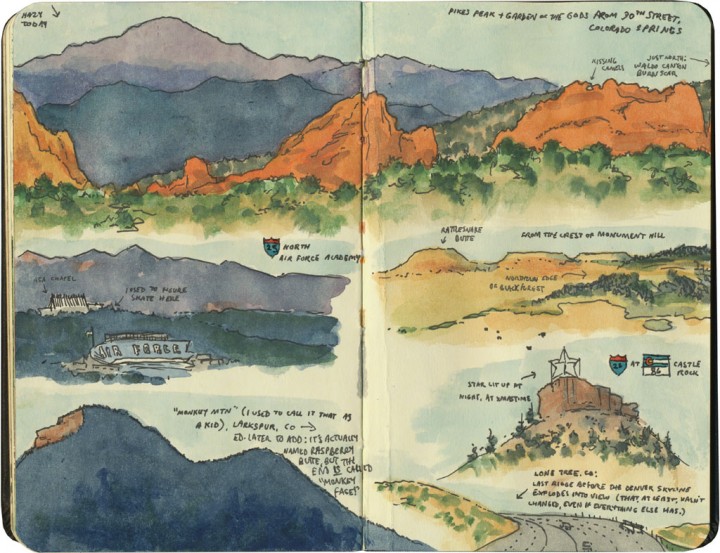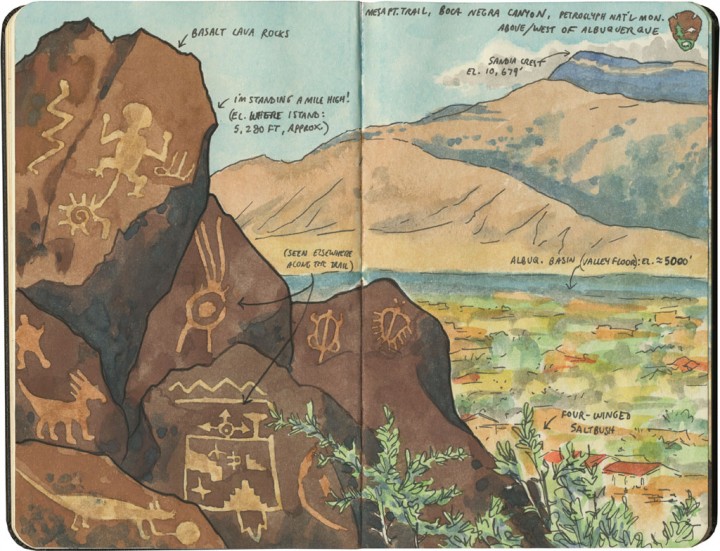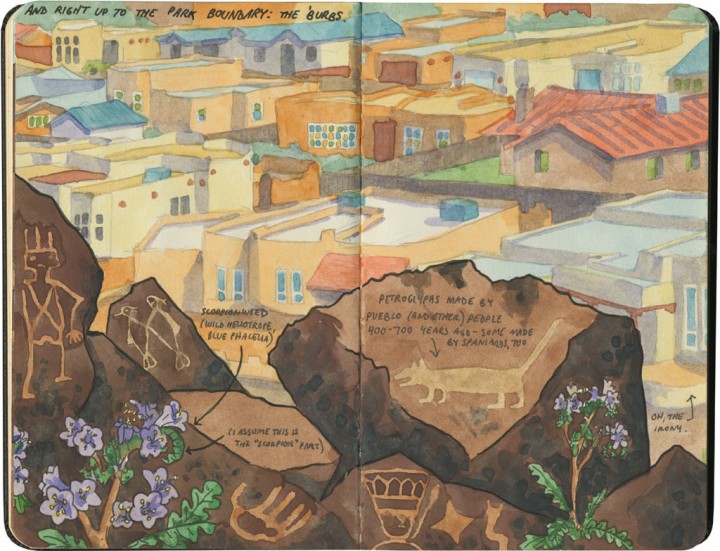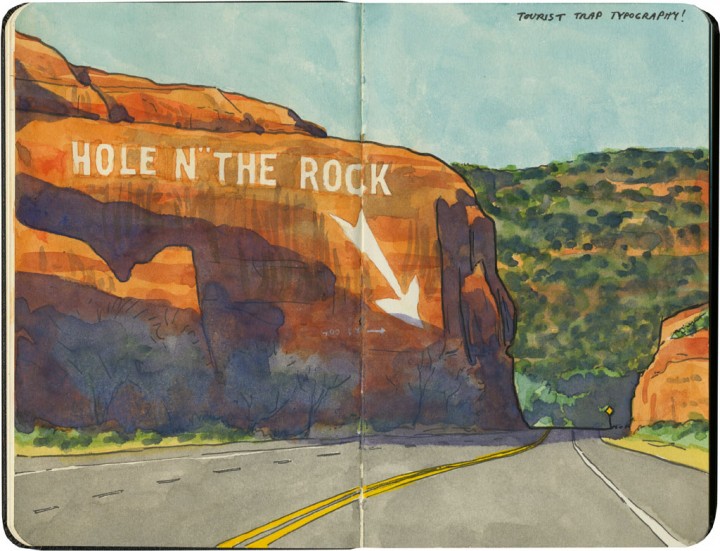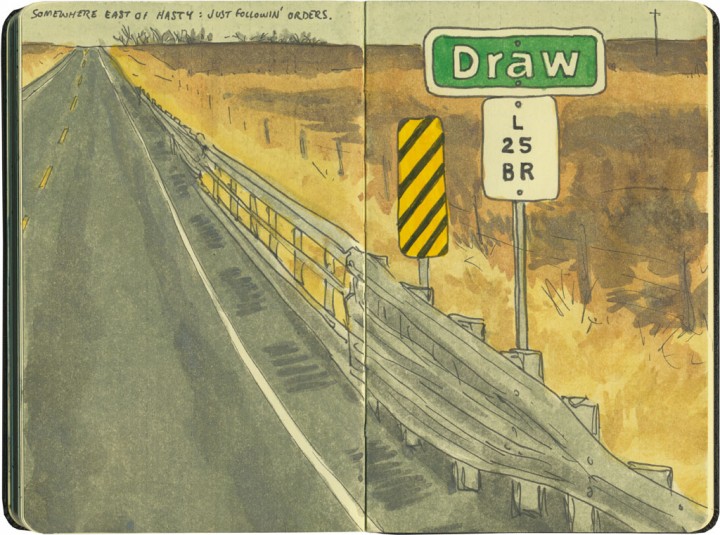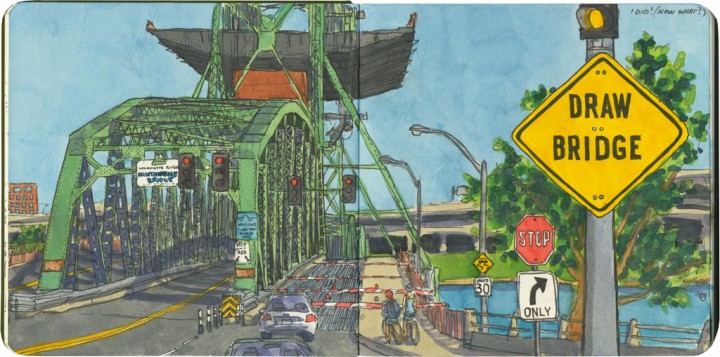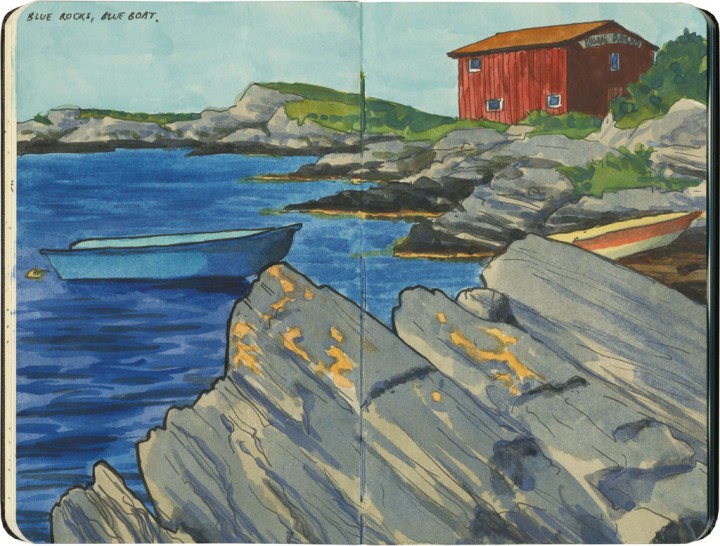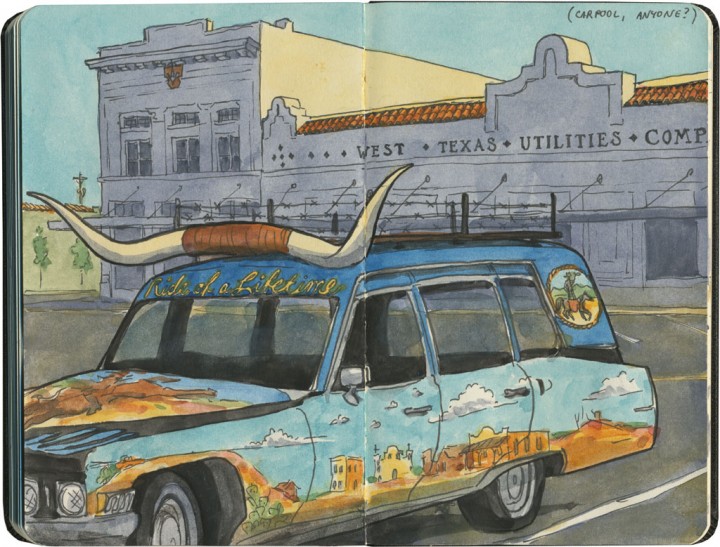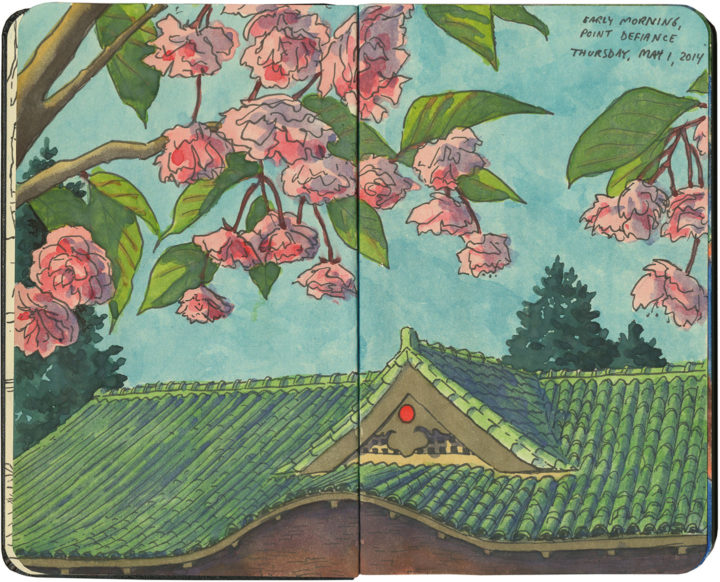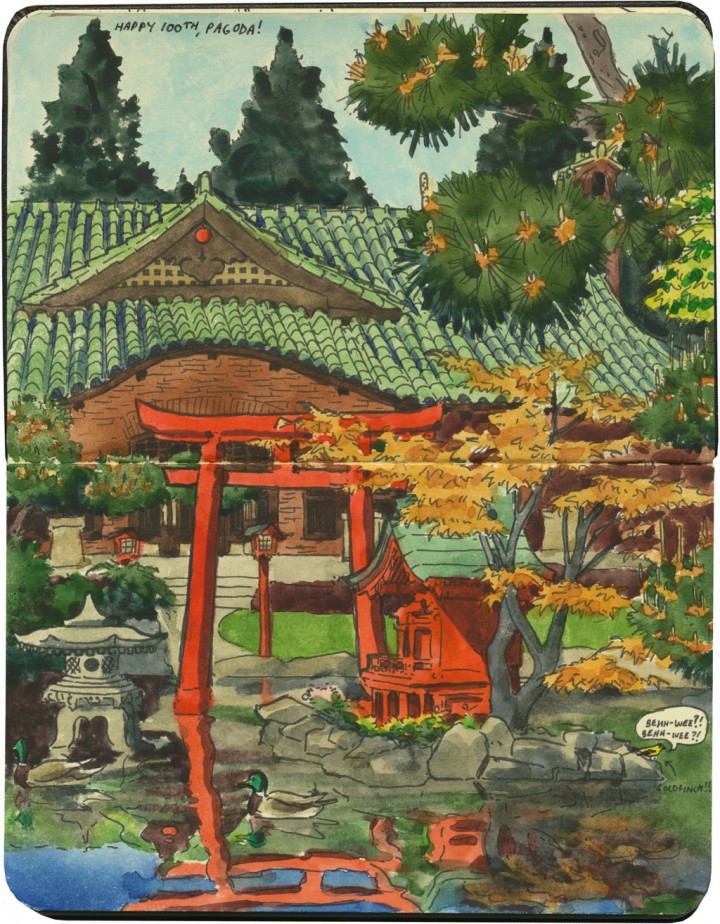There are some roads I have traveled so often that I have permanently etched into my memory every landmark, every sign, every single geographical feature along the way. The seventy miles between Colorado Springs and Denver is one of those stretches. When I was a kid, I knew exactly how far we were from our destination by which butte we passed; the profiles of every mountain in every season; and which hill was next to appear on the horizon. Every time I go back, no matter how much farmland has been converted into brand new suburbs, the mountains never change—and my mental map gets retraced with the same lines. On this day, I sketched while the Tailor drove, but I just as easily could have done this from memory—laying out every hill and peak along the route on one long, continuous sheet of paper.
